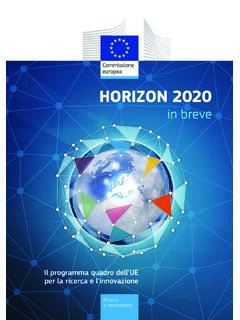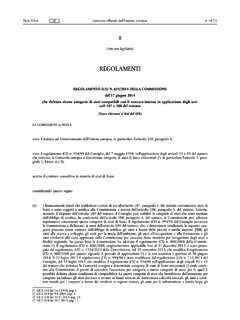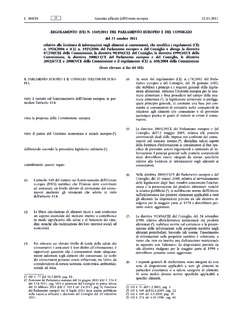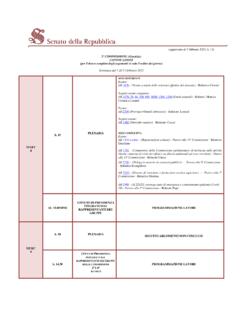Transcription of Quarterly Report - ec.europa.eu
1 Quarterly Report on European Electricity Markets with focus on the impact of high commodity prices and recovery demand in the electricity sector Market Observatory for Energy DG Energy Volume 14. (issue 2, second quarter of 2021). Energy DISCLAIMER: This Report prepared by the Market Observatory for Energy of the European Commission aims at enhancing public access to information about prices of electricity in the Member States of the European Union. Our goal is to keep this information timely and accurate. If errors are brought to our attention, we will try to correct them. However the Commission accepts no responsibility or liability whatsoever with regard to the information contained in this publication.
2 Copyright notice: Reproduction is authorised provided the source is acknowledged. European Commission, 2021. Directorate-General for Energy, unit A4, Market Observatory for Energy, 2021. Commission Europ enne, B-1049 Bruxelles / Europese Commissie, B-1049 Brussel Belgium E-mail: 1. CONTENT. HIGHLIGHTS OF THE Report .. 3. ELECTRICITY MARKET 4. Demand side factors .. 4. Supply side factors .. 8. EUROPEAN WHOLESALE MARKETS .. 12. European wholesale electricity markets and their international comparison .. 12. Traded volumes and cross border flows .. 21. FOCUS ON THE IMPACT OF HIGH COMMODITY PRICES AND. RECOVERY DEMAND IN THE ELECTRICITY SECTOR .. 24. Context of recent energy prices 24.
3 Evolution of wholesale electricity prices .. 24. Rising commodity prices .. 27. Power demand and activity.. 29. Short and medium-term impacts .. 32. Long-term impacts .. 33. REGIONAL WHOLESALE MARKETS .. 35. Central Western Europe (Austria, Belgium, France, Germany, Luxembourg, the Netherlands, Switzerland) .. 35. British Isles (GB, Ireland) .. 38. Northern Europe (Denmark, Estonia, Finland, Latvia, Lithuania, Sweden, Norway) .. 40. Apennine Peninsula (Italy, Malta).. 42. Iberian Peninsula (Spain and Portugal) .. 43. Central Eastern Europe (Czechia, Hungary, Poland, Romania, Slovakia, Slovenia).. 46. South Eastern Europe (Bulgaria, Croatia, Greece and Serbia).. 48. RETAIL 51.
4 Retail electricity markets in the EU .. 51. International comparison of retail electricity prices .. 58. GLOSSARY .. 59. 2. HIGHLIGHTS OF THE Report . The second quarter of 2021 brought electricity consumption in Europe very close to pre-pandemic levels, driven by an increase of economic and social activity, as COVID lockdown measures eased in most parts of Europe. EU-wide consumption increased by 11% year-on-year in Q2 2021, thanks to recovering industrial and labour activity. Heating and cooling demand also influenced the rise in demand during the quarter. Nonetheless, power de- mand was still slightly below 2019 levels ( ). Markets in the region saw a sharp increase on wholesale electricity prices compared to Q2 2020.
5 A steep rise in commodity prices (mainly gas, coal, and to a lower extent CO2) combined with increased power demand linked to the economic recovery and temperature fluctuations in Europe drove prices to 13-year highs in many European markets. Prices continued the rally during the following months, reaching historical records in September. The European Power Benchmark averaged 68 /MWh in Q2 2021, 158% higher on yearly basis. Compared to Q2 2019, the Quarterly average price rose by 58%. Economic recovery, a colder-than-average spring and heatwaves in June pushed up electricity demand and made more space for fossil fuels in the electricity mix, in spite of increasing carbon prices.
6 However, the share of renew- ables still managed to reach 42%, beating fossil fuels (32%). The presence of renewables in the mix was supported by an increase of 11% in solar generation (+6 TWh), 7% of wind (+5 TWh) and 7% biomass (+2 TWh) on a yearly basis. Low levels of electricity demand during the first lockdown of 2020, amplified the comparative increase in fossil fuel generation during the quarter. Coal and lignite generation rose by 29% (+17 TWh). High gas prices reversed coal-to-gas switching in most markets during the reference quarter. Despite increasing prices, gas-fired gen- eration saw its output grow by 9% (+10 TWh), while nuclear output registered an increase of 11% (+16 TWh).
7 Based on preliminary estimates, the carbon footprint of the EU power sector rose by 19% in Q2 2021 com- pared to Q2 2020, but it was still 10% lower than in Q2 2019. Despite high carbon prices, carbon emissions could still rise this year due to high commodity prices, especially gas, which have a detrimental effect on coal-to-gas switching. More extreme temperatures, colder winter spells and higher summer temperatures combined with the strength of the post-pandemic recovery, offset the higher carbon price. Energy prices have been rising to all-time highs, triggering considerable political and social concerns in an increasing number of Member States. Wholesale electricity prices have surged 180% year-on-year in August and registered a fivefold increase since the lowest recorded prices in the pandemic.
8 Most Member States experienced yearly increases above 100% and some of them, close to or even over 200%. More expensive electricity can be explained by a global rise in natural gas prices and, to a lower extent, strengthening carbon prices. Increased energy demand coming along with the post-Covid economic recovery has also played its part in driving power prices higher. The European Commission recently worked on a toolbox for actions, both short and medium-term, that Member States can implement to deal with this temporary surge in electricity prices, underlying that the delivery of the European Green Deal is fundamental. Factors such as high gas prices or a steep increase in demand can overcome the effect of carbon prices in driving the energy transition.
9 Rising gas prices have led to a worsening of gas-fired power plants' margins, in spite of record-high carbon prices, as could be observed so far in 2021. This situation has negated incentives for coal- to gas switching. Lignite-fired generation, with negligible fuel cost but higher level of emissions, managed to gain share in many European power mixes to the detriment of gas. An increased share of renewables in the system, combined with other low carbon sources with low marginal costs and higher energy efficiency efforts, would make fossil fuels less significant in setting wholesale market prices. Enhanced interconnection between Member States will lead to greater price convergence and lower prices.
10 Improved efforts to achieve greater energy efficiency will lower demand requirements for the grid and also contribute to lower prices. Flexible demand, combined with the deployment of smart meters and smart grids will allow softening times of peak demand through demand response measures. Overall, a well-functioning and well-integrated EU energy market, continued investment in renewable technology and improvements in energy efficiency are key to keep prices in check for all consumers. This is the core of the Fit for 55 climate and energy package. Demand for electrically chargeable vehicles (ECVs) rose over Q2 2021 on yearly basis. Member States kept support policies aimed at incentivising purchases and the phase-out of new combustion engine cars in many Member States by 2030.














